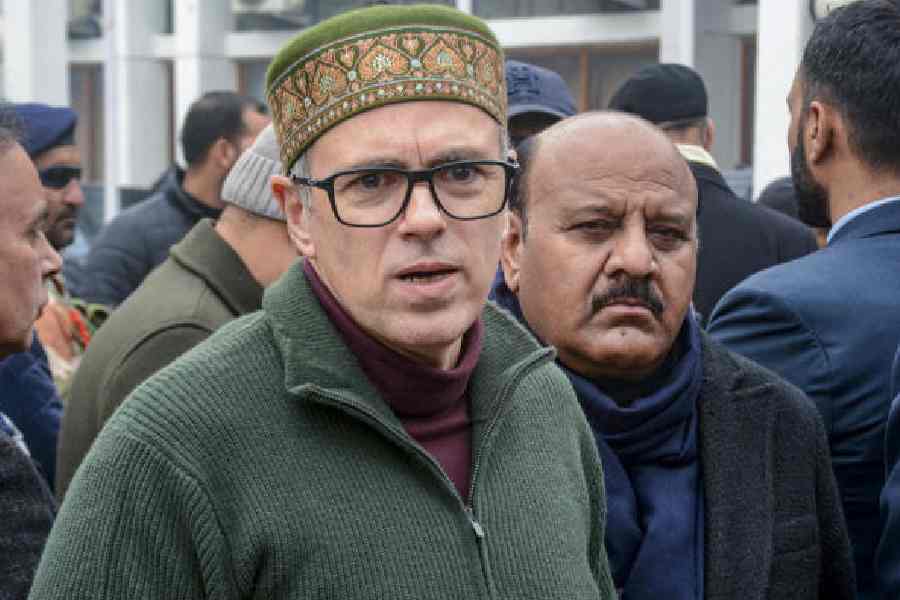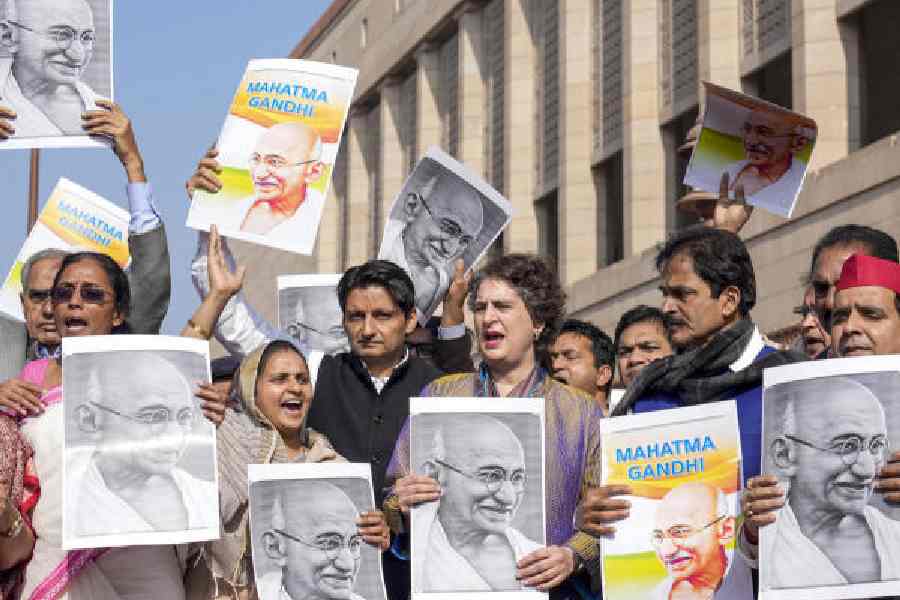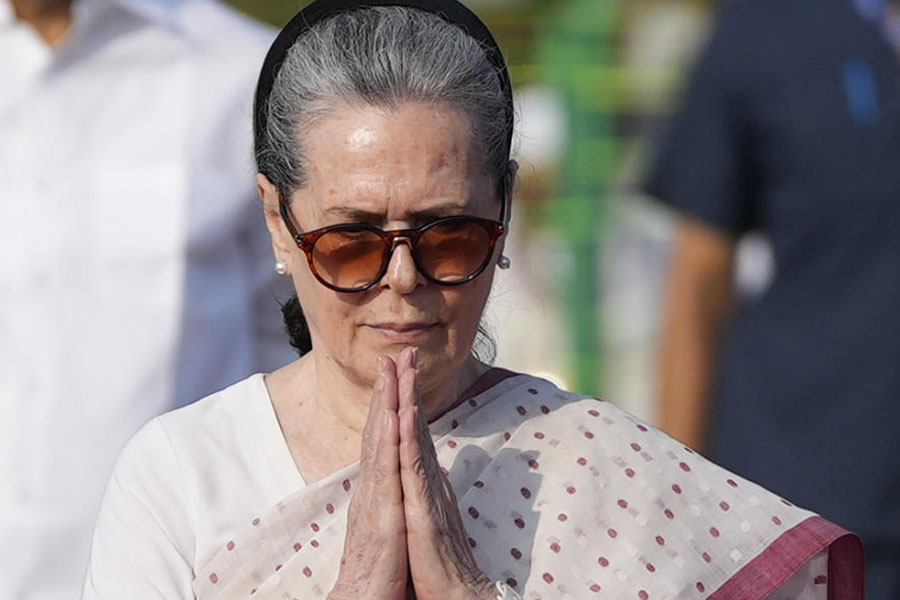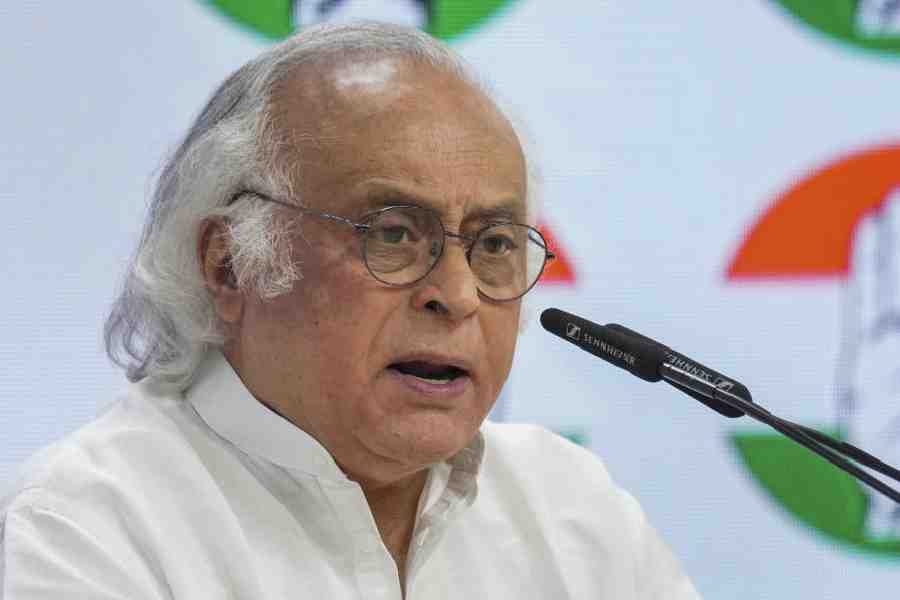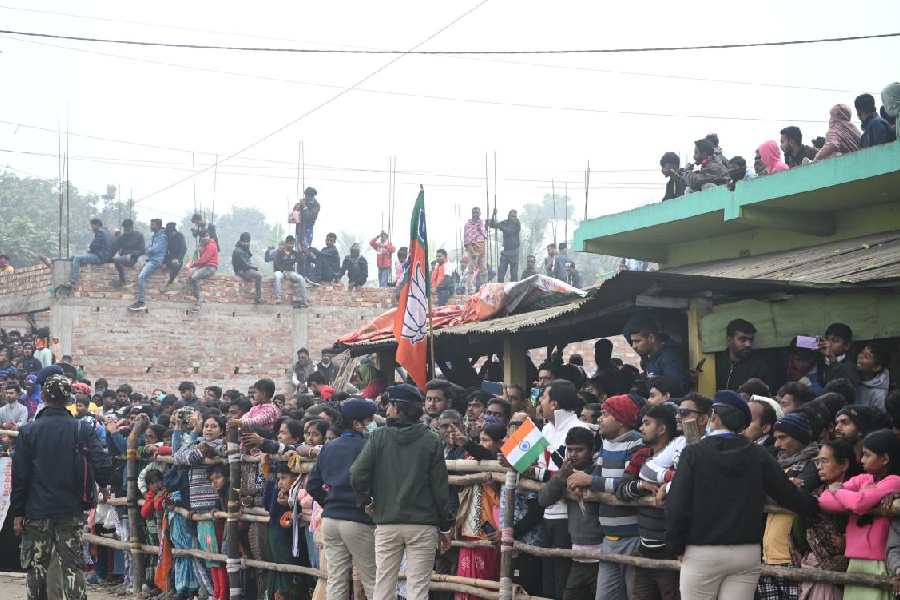 |
| Bihar chief minister Nitish Kumar. Telegraph picture |
Patna, Feb. 4: Bihar chief minister Nitish Kumar has written a letter to the Centre to draw its attention towards the irregularities in records being maintained by the office of accountant general (AG) of the state.
The discrepancies have been found in the funds available in the state disaster response fund (SDRF), earlier known as calamity relief fund (CRF).
The chief minister wrote the letter to Union agriculture minister Sharad Pawar in response to the Centre’s decision to provide a central assistance of Rs 1459.54 crore for the 28 districts declared drought-hit in the first phase in August last year.
The state had sought central assistance of Rs 5062.75 crore for them.
Against the sanctioned amount by the Centre, the Union ministry of finance released just Rs 341.08 crore presuming that a fund of Rs 1118.46 crore was lying in the state SDRF.
Alarmed over this development, the state government deputed its officials to reconcile the SDRF account details with the AG office.
It was found that Rs 354.16 crore had been shown on credit side in the 2000-01 in the accounts maintained by AG, Bihar.
The AG office, however, provided no supporting document that could show how this amount was credited in the SDRF/CRF.
The chief minister’s letter to the Centre has mentioned this.
The letter also mentioned about the adjustment of Rs 510.213 crore left in the CRF at the end of year 2004-05.
The state government, in accordance to the recommendations of the 11th finance commission, which was approved by the Parliament, had considered the said amount would become part of the consolidated fund of the state, but AG Bihar brought forward this amount as the opening balance in next year’s (2005-06) account .
“This has been repeatedly brought to the notice of the ministry of home affairs. However, this issue has not been resolved,” the letter states. It also asks for the deputation of a central team to assess losses in the remaining 10 districts of Bihar that were declared drought-hit towards the middle of August 2010 and for which the state had sought an additional assistance of Rs 1510.70 crore.
Though the Centre had sent a team for assessing ground realities in 28 districts, which were declared drought-hit in the first phase, no team was sent to the remaining 10 districts, declared drought hit in the second phase.
Meanwhile, the state disaster management department (DMD) has shot a letter to the AG office requesting it to furnish papers on the basis of which it has shown that Rs 354.16 crore was credited to the SDRF/CRF in 2000-01.
“The state has not received any letter from the Centre that talks about the releasing of 75 per cent of Rs 354.16 crore by it for the SDRF account. Even the state government did not release 25 per cent of the said amount, as it would have done as per norms. That is why we asked the AG office to provide papers, which could substantiate the AG office’s record of crediting of the amount in the SDRF,” DMD principal secretary told The Telegraph.
As per the rules, of the total amount credited to the CRF/SDRF, the Centre provides 75 per cent. The rest is provided by the state concerned provides 25 per cent of the amount.
AG (accounts and entitlement) I.D.S. Dhaliwal said he was not aware of any such letter. “I will wait for further communication, specific to this subject, from the state government,” he said.
Dhaliwal said reconciliation of SDRF account took place in December 2010 and it was mentioned at that time that the accounts were correct. The confusion of SDRF and the meagre amount provided by the Centre notwithstanding, the state government has already released Rs 400 crore, which is being used for distribution of gratuitous relief among the drought-hit people.
Out of the earmarked fund for the relief, Rs 380 crore had been utilised by February 3.
In addition to the gratuity relief fund, the state government has also released Rs 40 crore for providing supplementary nutrition to the drought-hit people and Rs 18 crore for districts, which are facing drinking water problems as the level of groundwater has gone down because of poor rainfall.


